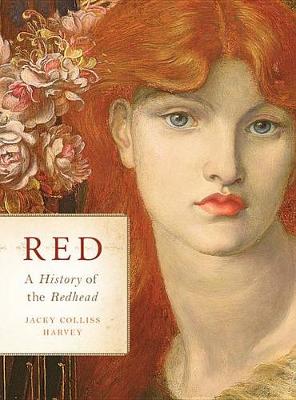Reviewed by Jo on
Being "a Redhead" is more than just about having ginger hair for me, it's a huge part of who I am. It's part of my identity, mainly because of how people have treated or reacted to me because of my hair colour. I am a redhead because people see me as a redhead; they see the colour of my hair, and judge me for it and/or make assumptions about the kind of person I am. There are so many stereotypes about redheads, from having a fiery temper, to being wild in bed, that are impossible for a redhead to avoid. So being seen as a redhead is a major factor in my life. And that all comes into play when reading a book like Red: A Natural History of the Redhead by Jacky Colliss HArvey, which looks into the whys behind everything I've experienced.
When I was a teenager, I read The Roots of Desire: The Myth, Meaning and Sexual Power of Red Hair by Marion Roach. By then, because of being ginger, I had already experienced bullying at school, jeers from strangers, and being stopped on the street, as if to be asked directions or what the time is, to instead be asked whether it's true what they say about redheads by an old man, who leered at me. I knew some people despised redheads, some people thought us ugly, and others fetishised us. Why? So when I discovered The Roots of Desire, I read it eagerly, wanting to understand why I was treated so differently simply because of the colour of my hair. That book entirely changed the way I saw myself. Among other things, there's a lot of focus in The Roots of Desire on mythology and superstition, and how some artists depicted those in their work as redheads, and the beautiful paintings, specifically by the Pre-Raphaelites, I discovered of women sharing my colouring and looking absolutely gorgeous, plus Roach's own pride in being a redhead, had a profound affect on me. I became prouder of being a redhead, and I found I liked how I looked more than I did before. And, being a young girl who had an interest in mythology and anything to do with the occult, I have to say I found the link between the two exciting.
When I discovered Red: A Natural History of the Redhead, I was expecting something similar, but what I got instead was something that felt more true, because it was based on fact. Red looks into history, right from the very early humans to present day, and where in the world red hair showed up, and what that led other people to believe about redheads because of the people, at that time, who had red hair. Some of the Thracians, who the Greeks enslaved, a barbaric, savage race (think Spartacus, he was Thracian), had red hair. Some of the Vikings, another fierce and blood thirsty people, had red hair. Some Jewish people, who were discriminated against, had red hair. And Judas was a Jew, so depict him with red hair, and all he's known for is linked to red hair. Red also discusses redheads in art at length, but it talks more about the subjects - such as Judas and Mary Magdelene - and how those subjects are depicted (rather than the artwork as a whole) and the models and artists more a little more than the artwork itself.
This book was absolutely fascinating as it looks into the history of redheads around the globe, and what, with redheads making up only 2-6% of the population, that "otherness" meant to people who saw us. It talks about how the pale skin that comes with red hair is better at synthesising Vitamin D than darker skin, which in turn meant stronger bones, which then led to healthy pregnancies and births, with red hair then becoming a desirable trait in mates way back when, which is links to the stereotypes about our sexuality. This also relates to where on the planet redheads were located in the past, as their pale skin fared better at synthesising Vitamin D in places where there was less sunlight than those with darker skin.
Red covers a whole lot more, and it is absolutely fascinating, not just learning about the redheads of the past, but the human race itself. But for me, as a redhead, it's the better, more complete answers to the questions of why that really hooked me. It's strange to think you can understand yourself better for understanding why you are treated the way you are, but it's true. It just adds to how I see myself, and allows me to see clearer the way others see me.
And the science and medical side of things! It was also amazing to learn things that I always thought were typical to me, but turn out to be redheaded traits - we do feel pain more acutely, and surgeons suggest 20% more anaesthetic for us than other people, and we're also more affected by the cold than everyone else, feeling the pain of the cold where others are comfortable. It blew my mind to read that perfumes smell differently on the skin of a redhead than they do on other people because our mutated MC1R genes mean our skin mantle is more acidic than everyone else's, and that there's evidence our pheromones may smell different, too. Plus the link between red hair and melanoma, Parkinson's disease, endometriosis, and maybe even Tourette's syndrome.
Red is just a wealth of information that unearths the truth and lies behind the stereotypes and myths about redheads, plus a fascinating insight into just how our biology makes us different. I absolutely loved it, and I would recommend it to anyone who is or knows a redhead, or just has an interest in us gingers.
Reading updates
- Started reading
- 25 November, 2017: Finished reading
- 25 November, 2017: Reviewed
